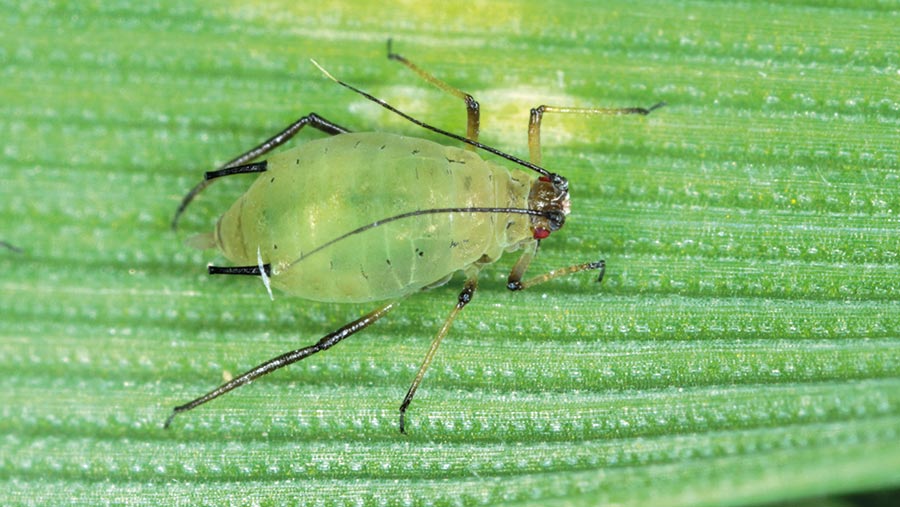Natural BYDV treatment shows promise in Niab trials
 © Orion Future Technology
© Orion Future Technology A biostimulant could help farmers manage the increased risk of yield loss from barley yellow dwarf virus (BYDV) in cereals resulting from an unseasonably early harvest and record-breaking temperatures.
The virus can cause yield losses of 30-40% in warm autumns and, with the ban on neonicotinoid seed treatments, researchers have been trialling new ways to control the disease.
See also: What are the viable alternatives to nitrogen fertiliser?
Niab has been investigating a range of treatments to protect winter cereals against BYDV, along with Orion Future Technology.
Niab agronomist Syed Shah found that using a silicon biostimulant foliar spray, either with a pyrethroid or as a standalone alternative, has shown encouraging results.
“We applied three sprays on Extase winter wheat that emerged 19 September, on a high-risk site in south Devon.
“One of the most successful treatments was a combination of Sirius, a silicon biostimulant, mixed with a well-established pyrethroid product,” he says.
However, for those looking to protect both crop and beneficials, the results from the silicon-only treatment were very encouraging, he says.
“More small plots and on-farm trials will be conducted to validate the results.”
Combining the biostimulant with the pyrethroid saw a yield increase of 17.2%, over the untreated area.
Using the product alone improved yield over the untreated by 5.5%, compared with a 9.7% yield increase achieved with a pyrethroid.
Each application was made 170C day degrees from emergence, with applications on 13 October, 21 October and 9 November.
The trial found the use of the biostimulant helped to strengthen the plant’s natural defences against biting pests, such as aphids.
It strengthened cell walls and increased cuticle thickness, which reduced aphid feeding. This also reduced the risk of virus transmission.
Drilling later has been used as a means of minimising BYDV risk, but with such an early harvest caused by the dry summer, many growers have drilled earlier than has been possible in previous years.
Warm autumn conditions across the UK are allowing aphid populations to increase rapidly.
James Kennedy, managing director at Orion Future Technology, says: “September was 0.5C higher than the long-term average for the month, with an average temperature of 13.4C.
“In a warm autumn it is advised to protect crops early, and having a new biostimulant as an alternative or addition to a pyrethroid will be welcomed by growers should autumn temperatures continue in this way.”

